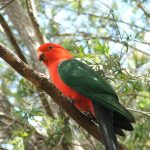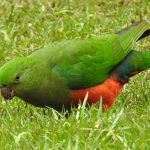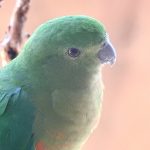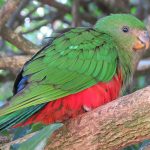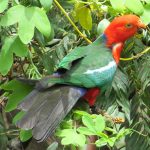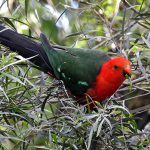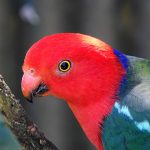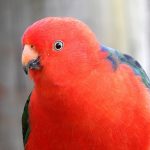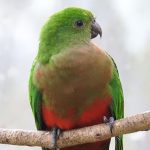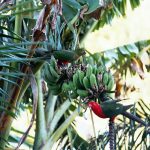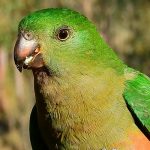AUSTRALIAN KING PARROT
Australian King Parrot: A Portrait of Colour and Character.
The Australian King Parrot is truly a spectacle of the eastern Australian forests. Imagine the male: his head and neck are cloaked in a luminous, deep crimson, as if dipped in the twilight sun. His wings and body burst with a glossy emerald green, while a streak of rich, sapphire blue brightens his lower belly and the feathers beneath his tail. In contrast, the female is more subtly adorned—her plumage is mostly green, offering a gentle blend with the forest canopy, with only hints of red around the head and neck. Both sexes are medium-sized, measuring about 40 to 43 centimetres in length, making them one of the more statuesque parrots of the region.
Habitats: From Rainforests to Woodlands
| Region | Typical Habitats |
|---|---|
| Queensland | Rainforest, wet sclerophyll forest |
| New South Wales | Rainforest, woodlands |
| Victoria | Forest, woodland, urban fringes |
| South-eastern South Australia | Forest, riverine woodland |
These parrots thrive in lush rainforests, the cool embrace of wet sclerophyll forests, and the dappled light of eucalypt woodlands. The rustle of their wings and their vivid colours are a familiar sight from Queensland down through New South Wales and Victoria, reaching into the green heart of south-eastern South Australia.
Diet: Nature’s Bounty
Australian King Parrots are predominantly seed eaters. Their diet is a vibrant medley:
- Seeds from native trees and shrubs
- Juicy fruits and seasonal berries
- Crunchy nuts
- Blossoms and sweet nectar
As they feed, the soft thud of seeds falling and the gentle rustle of leaves fill the air, while the subtle perfume of eucalyptus and wildflowers lingers.
Social Life and Sounds
These parrots are typically seen in pairs or small flocks. Their calls are unmistakable: a series of loud, metallic whistles and chattering that echo through the treetops, especially as the warm months approach the breeding season. Their flight is strong and direct, their wings slicing through the air with swift precision as they weave between branches and explore their leafy domain.
Breeding: New Life in the Canopy
Breeding Details
- Season: September to January
- Nesting: Tree hollows or natural cavities
- Clutch Size: 3–6 eggs
- Parental Care: Both parents share duties—incubating the eggs and feeding the chicks with great attentiveness
During this time, the forest becomes a nursery, alive with the hopeful sounds of new life.
Conservation Status and Human Connection
The Australian King Parrot is classified as Least Concern by the IUCN, a testament to its adaptability. However, like many forest dwellers, they can be affected by habitat loss and fragmentation. The subtle hum of chainsaws or the distant rumble of development can threaten these vibrant communities, making the preservation of their habitats more important than ever.
Respect and Wonder
Observing a King Parrot in the wild is a moment of wonder—whether it is the flash of red among the leaves or the sound of their calls drifting through the forest. Remember to admire these birds respectfully, keeping a considerate distance so they may continue to thrive, undisturbed and wild.
By learning about and appreciating the Australian King Parrot, we take a step closer to protecting the rich tapestry of life that colours the forests of Australia.

